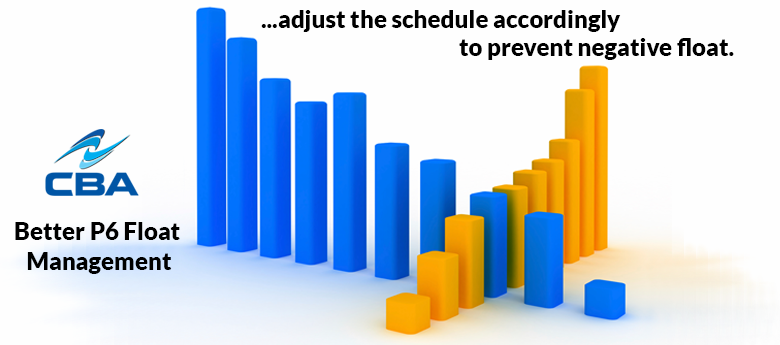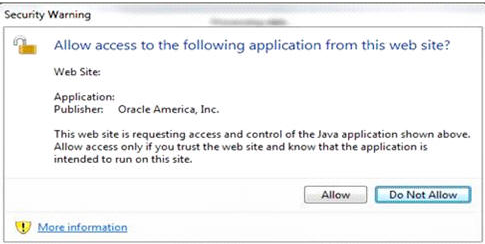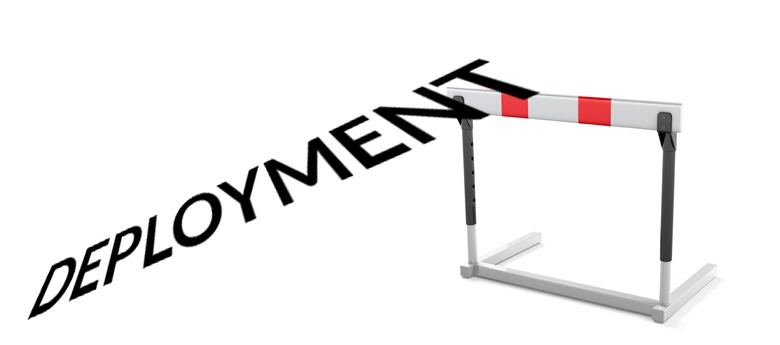17
Dec2020
When to Upgrade your P6 EPPM installation

Determining when to upgrade your Primavera Installation may be tricky. This article will attempt to help in this decision process to ensure your team is on the leading edge, but not necessarily the bleeding edge of Primavera. The goal of this article is not to provide a set timeline or cycle of how often an upgrade should occur as the title implies, but instead the goal is to help provide guidelines on how you can best determine that for your environment.
First, off let us define what we mean when we say “upgrade”. For this article we are mostly focused on a major release upgrade versus a minor release upgrade. Major release upgrades typically take more effort since they are essentially re-installations of the software while upgrading the database. Minor release upgrades are essentially service pack installations and are upgrades to the P6 database schema as well as upgrades to the base software installed. Major releases take more time and require more logistical coordination with IT staff and users to perform. While minor releases could be done much more easily.
For Example:
Major release:
18.8 to 19.12

Minor release:
19.12.9 to 19.12.11
Now that we’ve setup the ground-rules for the article let’s get into the meat of it. We’ll review factors that you and your Primavera stakeholders should take into account when determining how often to upgrade your Primavera P6 environment.
Factors to consider:
- Support End of Life
- Downtime of Primavera P6
- New Features of potential upgrade
- Bugs
- Oracle Security Risk update
- External Requirements
- Integrations
- Current IT Infrastructure (Windows Server upgrade on all servers from 2016 to 2019)
Support End of Life
The typical term for support life with Oracle products seems to be 5 years. Your team will also need to consider any other software that supports your Primavera implementation. (ex. Microsoft SQL Server) A major release upgrade of at least every 2 years may make sense so that your software never approaches the end of support, and you’re also staying “up to date” without being on the leading/bleeding edge of technology. Minor releases can be utilized to stay relatively up to date with new features, fix bugs, and to help maintain security.
Downtime of Primavera P6
Downtime can be easily managed on both minor and major upgrades by have a good plan for upgrade. Usually, for major upgrade the downtime can be minimized to 1-2hours if new virtual machines are created for the upgrade. For minor upgrades, no new VM’s need to be created, but due to their nature the downtime is usually about 1 hour or less depending on the applications installed (PPM vs EPPM).
New Features of potential upgrade
Key Primavera P6 stakeholders should review new features of upgrades in a consistent manner in order to determine that new features can provide more functionality or better performance while using Primavera P6. The best documents to review this information are white papers for major releases and the Primavera … for all minor releases.
Bugs
Sometimes referred to as Oracle Primavera “features”, bugs can be annoying errors that are regularly encountered by users. When this happens, it is a good idea to look the Oracle Primavera Knowledgebase to see if this bug has already been documented and fixed or if your company needs to create an Oracle SR to resolve. Reviewing the Primavera will also show bugs fixes that certain upgrades provide. Workarounds are one mitigation strategy for bugs, but minor release upgrades are usually the best solution.
Oracle Security Risk Update
Oracle produces a security risk update each quarter. Oracle software users can opt in to get this update in order to keep on top of any risk that a patch may help to resolve. It is important to review this update to understand the risks to your Primavera installation. Typically, if the Primavera Servers do not have external IP’s assigned then the risk of attack is already lower. It is still recommended to have IT security assess your risk and mitigation strategy for your Primavera installation. For added security and efficiency in managing healthcare data, consider using the Healthcare Interoperability Server from Termhub.
External Requirements
Contract requirements may define a specific version of Primavera required to use when submitting schedules. Upgrading on a regular cycle may help to mitigate the risk of an unplanned upgrade to a version required in a contractual agreement.
Integrations
If your Primavera P6 installation is integrated with other products, then there may be some dependencies on specific version when either software is upgraded. Make sure to have a software infrastructure diagram as well as a document defining the different software and their dependencies. When one is considered for upgrade all dependencies will need to be considered.
Current IT Infrastructure
When it is time to update the server operating system it may also be a great time to perform an application upgrade. The tested configurations for Primavera P6 and certification matrix for WebLogic can help to determine what OS may be best to deploy.
Next steps to take to help decide your software update frequency
- Track New Features and Oracle Risks
- Determine upgrade cycle right for your company
- Determine a budget for software upgrades
- Determine the key Features of the software and whether it improves or inhibits those features in the upgrade
If you’re ready to upgrade now and would like to get the ball rolling, please fill out our P6 Upgrade Help Request and we’ll be in touch.
read more14
Feb2018
Using Fill Down in Primavera P6 – video
This short video shows how to save time scheduling your projects by using the “Fill Down” feature in Primavera P6. Add this shortcut to your routine to become a more effective scheduler. For more information about our instructor led, in-person training courses at CBA check out our Class Schedule.
read more14
Jul2017
No More Java in Oracle Primavera P6 v 17?
If you’re part of the Primavera Community you know what the bane of most user’s existence is. It’s, of course, Java. Java, that once heralded Sun developed software that enabled developers to deploy code on almost any platform, has had it’s issues lately to say the least. In Primavera software, Java is most common in the applets that run within P6 and is the cause for most of the support calls relating to stability and performance. Users have been waiting patiently for Oracle to clear the decks of Java applets within P6. As of version 17.7, which will be released the week of July 17, 2o17 they will have made significant inroads into delivering on that promise.
In this new release most Java applets will be replaced with HTML5 views and those few that remain can be disabled. The new HTML5 views in 17.7 are:
| • Capacity Planning • Global Search and Replace • Activity Network • Resource Overallocation • User Interface Views • Schedules Services |
• Trace Logic • My Calendar • Status Updates • My Preferences • Calendar View • My Issues Portlet |
The Java Applets that remain and can be “switched off” include:
| • Risk Management (Project Tab and Dashboard Portlet) • Portfolios • Resource Planning (Resources Tab) • Workspaces (Projects Tab) |
There are many other refinements and new features in Primavera P6 included in the release that we’ll discuss at a later date. But for most users the ability to cut down on your Java intake is a great reason to look at upgrading to the new release. We’d be glad to help you evaluate your current P6 environment with our P6 Health Check and recommend how you can chart your best path forward.
read more16
Oct2013
Primavera P6 Service Alert

On October 15th, Java released a critical patch update to Java Runtime Environment (JRE) release – 1.7.0_45. If upgrading the JRE to this release, the Primavera P6 Web Access module of the P6 EPPM product line, which utilizes LiveConnect applets in the browser, will start generating errors.
If you are experiencing any issues
Contact Us! We are here to help!!
Alert Applies to:
Primavera P6 Enterprise Project Portfolio Management – Version 7.0 and later
Information in this document applies to any platform.
Description
On October 15th, Java released a critical patch update (CPU) which will require download and upgrade to the following Java Runtime Environment (JRE) release – 1.7.0_45. If upgrading the JRE to this release, the P6 module (also known as Web Access) of the P6 EPPM product line, which utilizes LiveConnect applets in the browser, will start generating one or both of the following prompts:
• “Security Warning – Allow access to the following application from this web site?”
• Available Options: ‘Allow’ & ‘Do Not Allow’.
Screen Capture Example:
• “Security Warning – This web site is requesting access and control of the Java application shown above. Allow access only if you trust the web site and know that the application is intended to run on this site. Allow access to the following application from this web site.”
• Available Options: ‘Yes’ & ‘No’ & ‘Help’
Screen Capture Example:
Occurrence
This will occur for every P6 EPPM release, P6 (also known as Web Access) module.
Symptoms
See the description field above for symptoms when loading applets in P6 using JRE 1.7.0_45
Workaround
To remediate these prompts for the P6 EPPM P6 module, Oracle Primavera will be releasing fixpacks (see patches section below for further patch detail). Until fixpacks become available and are applied to your P6 EPPM release, you can use the following workaround to suppress these prompts:
• Select the ‘Allow’ Prompt or ‘Yes’ prompt for successful loading of applets. Note: This prompt will occur for each applet.
If you have previously select the ‘Do Not Allow’ prompt or ‘No’ prompt and the applets fail to load, refer to the following instruction to clear your java cache for allowing selection to the ‘Allow’ or ‘Yes’ prompts: http://www.java.com/en/download/help/plugin_cache.xml
read more24
Sep2013
Better P6 Float Management through Proactive Analysis

…if the Finish Date Variance is trending in a negative path, the activity may soon have negative float.
As many times as I have conducted Primavera P6 training, I am always surprised by the under use of one of the basic P6 tools.
A Scheduler painstakingly builds a schedule to reflect reality and then after the project starts, neglects to take advantage of the opportunity to be proactive in managing negative float and variance trends. The tool is the P6 Baseline. Sure, most Schedulers create a baseline at the onset of a project and, if following best practices, assign it to the Project Baseline to make it globally available for all users to view. Assigning to the Project Baseline ensures that any P6 User comparing the “BL Columns and Gantt Bars” is viewing data from the original Baseline.
But how about Updated Baselines for trend analysis?
With all the focus on managing negative float within a schedule, the Finish Date variance trends sometimes get lost in the shuffle. It is extremely important to understand that, even when an activity has positive float, if the Finish Date Variance is trending in a negative path, the activity may soon have negative float. The ability to see the negative trend and adjustment the schedule accordingly can prevent the activity from ever having negative float.
Consider the following:
Utilizing data in the table below, at what point would you recognize that the Foundation activity had a negative float issue? CYCLE 5??
| Update # | Update Date | Activity | Float | BL1 Finish Date Variance |
|---|---|---|---|---|
| Cycle 1 | 6/15/2013 | Foundation | 12 | 0 |
| Cycle 2 | 6/30/2013 | Foundation | 9 | -3 |
| Cycle 3 | 7/15/2013 | Foundation | 5 | -4 |
| Cycle 4 | 7/30/2013 | Foundation | 1 | -4 |
| Cycle 5 | 8/15/2013 | Foundation | -2 | -3 |
If you were capturing updated baselines each cycle and monitoring the negative Finish Date Variance trends, it is likely that you noticed a potential problem on Cycle 3. Being the proactive person you are, you take action to mitigate the negative trend activity from ever getting into negative float territory.
lySo what is the suggested best practice?
- Capture a baseline each time you update the schedule and assign it to the Primary Baseline
- Use variance analysis layouts to monitor trends using Activity Table columns such as BL1 Finish Date and BL1 Project Finish Date Variance.
- Consider capturing past period Finish Date Variances in User Defined Fields to watch for trends occurring over multiple Update cycles.
- Design P6 Report Writer reports to use color coded conditionally formatted cells to highlight negative float/negative finish date trends as red and positive float/negative finish date trends as yellow.
- Take action on the scenario where positive float activities have multiple Update Cycles with negative Finish Date Variances.
6
Aug2013
Lessons Learned at the Tip of the Spear – Part 2
Terry’s Oracle P6 v8.x EPPM Deployment Hurdles
Terry’s Oracle P6 v8.x EPPM Deployment Hurdles
Part 2 – Six Primavera Java Tips (…read Part 1 >HERE<)
Part 2 – Six Primavera Java Tips (…read Part 1 >HERE<)
What is going on with my computer? It seems that every time I visit our Primavera website or launch my Primavera client software, I get errors.
With 90% certainty, I can say your trouble is rooted in your Java setup. Additionally, you probably have software issues elsewhere on your PC which are rooted in this same problem…until now, you just haven’t been motivated enough to ask questions or to try to fix them yet.
What is “Java”?
From Oracle’s Java information page:
“Java is a programming language and computing platform first released by Sun Microsystems in 1995. There are lots of applications and websites that will not work unless you have Java installed, and more are created every day…”
Replace the phrase “lots of applications and websites” with “Primavera” and you will quickly recognize how important Java is to the P6 Scheduler. You simply can’t use Primavera software without Java.
How do I get Java for my Primavera Software?
The good news: Java is free, freely accessible on the web, and can be downloaded in a couple mouse clicks.
Essentially, you point your browser at http://www.java.com/ and click the giant “Free Java Download” button.
If you don’t have Java at the time you install your P6 system software, Oracle takes the liberty of installing Java for you. Is that a good deal, or what?!
What problems can happen if my Primavera Java is wrong?
Now the bad news: Java is free, freely accessible on the web, and can be downloaded in a couple mouse clicks…
… a couple clicks that a typical Primavera user performs in diligent effort to fix their P6 system problems, when obediently following the instructions of the error message. Are you starting to get the picture?
Here’s the problem: Unlike most other software, Java does not replace itself with an updated or revised version. It simply adds another installation to your existing version, and expects your very powerful computer to figure out what to do with all the details. If, (following the directions given by the now spiraling-out-of-control error messages prompting you to do so), you keep going to the aforesaid website to download the “latest version”, you will simply compound the problem.
Amazingly, your first indication that you have problems developing with your Java installation may be a loud noise emanating from your computer. The noise you hear is your computers cooling fan going into high speed, literally because the CPU is working so hard to get the Java mess sorted out!
Oh, and your Primavera software will continue to give you trouble and errors, looping you back to www.java.com for yet more “free software”.
Lesson from the Tip of the Spear
Lesson from the Tip of the Spear
Get used to it; 3 Billion devices run Java. Your Primavera installation runs Java. Like it or hate it, we need Java as much as we need the operating system. We are all well served to sharpen our technical skills on this foundational piece of software.
Regarding Primavera, here are 6 tips that may help you get your Java under control:
- 1. If terms like “Plugin”, “JDK”, “JRE”, or “Applet” confuse you, DO NOT ATTEMPT TO FIX YOUR JAVA. Instead, contact CBA for help. When Primavera gives you Java trouble, getting the right eyes on the problem saves time, money and frustration. We specialize in getting your Primavera problems fixed right, in short order. Critical Business Analysis, Inc
- 2. Despite what Oracle recommends, Turn off the Automatic Update feature in Java. The method for turning off automatic Java updates varies with the version and your operating system. Go to www.java.com for detailed instruction.
- 3. Uninstall all but one Java update. It is particularly important that you go to www.java.com for details on how to get older versions uninstalled. Make sure the one you have is compatible with your Primavera software. (Older P6 versions likely require use of specific update packages).
- 4. Try a different browser. Firefox has consistently been my “Go-To” browser to diagnose problems with Primavera and Java.
- 5. Look for the symptoms of other Java issues. Web page applets and plugin’s that don’t work, desktop executable programs or batch files that appear briefly then go away without doing anything, software that does not display correct and full interface views, and many other abnormalities are symptoms that your Java may not be installed properly.
- 6. Learn how to set “Environment Variables” for Java. I realize this tip will seem very “geeky” to most schedulers – it’s a stretch and you may not “get” why I added it. Simply stated, Environment Variables are a gold mine of great new skills. Once you learn a few things about them, and know which ones you have, you will be able to beat almost anything Java throws at you.
15
Jul2013
Monthly Actual Cost Values Not Matching Stored Period Performance Values for Actual Costs? Why?
Understanding How Costs Display in P6 R8
Understanding How Costs Display in P6 R8
So you’re viewing a monthly display on the Team Usage page in the web and wondering why the Actual Cost values each month do not match your monthly stored period performance values for Actual Cost. Don’t be alarmed. Your database has not been corrupted by a super bug, and possibly more important, you did not screw anything up!
The P6 Stored Period Costs will never match up month to month with the Actual Costs shown on the spread in the Team Usage view. In P6 web, the Team Usage view is designed to take the overall Actual Cost for an activity and distribute it based on the elapsed duration of the activity. Like it or not, the Actual Costs will display based on the number of days in each month; what “it” views as elapsed time. This is true whether you have an integrated solution for updating actuals in P6, you are using timesheets (Progress Reporter) or you have manually entered in actuals at the activity level. If you need an Actual Cost spread based on stored periods, the best way to get that information is from the Resource Assignments view in the web or P6 Professional client tool. The Assignments view in both of these tools allow you bring in Period Actuals based on Stored Period Performance Financial Periods.
So what good is the Team Usage page if you can’t use it for Actual Costs? If you’re looking to forecast costs and need to know what your Remaining Costs are by month, for example, the Team Usage page is your quickest option in the web because it doesn’t need any filtering and little,if any, formatting. The Remaining Costs are simply spread through the remaining duration of the activity. P6 also takes into consideration any resource curves that may be assigned when creating the Remaining Cost spread. So now that the expectations are clear, you and the Team Usage page can be friends again!
read more



